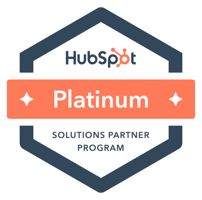It's no surprise that sales automation is an ever-growing trend. It continues to shape both regional markets and the global economy as a whole. In fact, research indicates that up to one-third of sales and sales operations tasks can be automated with modern technology. The benefits of doing so? Put simply: increased revenues, and reduced costs.
Let's talk about some key areas in which sales automation can prove to be exceptionally useful, how you can implement it, and why you should as soon as possible.

Areas of Sales Automation
Let's get one thing clear right off the bat. There are some core sales functions that will never and can never be fully automated. There is no substitute for person-to-person interaction, for creativity and abstract thinking, or for the boundless potential of the human spirit. Companies shouldn't view automation as a replacement for their human workforce; rather, they should see it from the perspective of a complement, something that aids their sales reps to deliver exceptional service to prospects, leads, and customers on a consistent basis.
With that in mind, here are some key areas that you may want to consider for sales automation:
Reducing customer churn.
Can you identify which customers are most likely to remain loyal to your brand? And which ones will run to the competition on a whim? Lead scoring tools powered by machine learning (ML) can integrate several data points (previous customer behavior, buying patterns, preferred channels of communication, etc.) into a centralized algorithm. They can give you an accurate picture of which customer profiles are most likely to churn, and which ones are most likely to stay. The benefit to your sales team is the ability to predict who will churn, and when, and then provide attractive incentives that will convince customers with one foot out the door to stick around.
Managing leads more effectively.
Automated systems allow companies to proactively engage with prospects that may be "stuck" in the sales funnel - and without any human effort. Chatbots are one example of this principle at work. When your landing page comes equipped with a pre-programmed bot, it can answer common questions that visitors from your latest marketing campaign ask. They can direct them to the appropriate product/service or FAQ page, and even qualify them before handing them over to a live agent. The end result is that your human agents spend more time selling to high-value leads, instead of filtering through prospects on their own.
Quicker RFP drafts.
The request for proposal (RFP) process can be tedious and time-consuming. This is especially true if the draft sent out to potential contractors/suppliers contains confusing or ambiguous language. Automated tools that employ natural language processing (NLP) can speed up the time it takes to draft an RFP. They can even propose different response options for each question on the form. At the end of the day, this kind of automated solution can help streamline your entire RFP process, and make it much less of a headache.
Faster product activations.
Are your sales reps manually reaching out to new customers with license certificates and keys to their recently-purchased product? Then they're spending less time selling to other prospects. Automated bots can do the same job more quickly and efficiently, and make the customer experience better, too. Why make your customers and internal departments (like finance and legal) wait unnecessarily? Consider using bots to validate license keys, send them out, and then update your internal stakeholders as needed.

How to Implement Sales Automation
There's no one "right" way to develop and deploy your sales automation strategy. That being said, there are some key principles to keep in mind as you determine how best to integrate an automated approach into your sales process. For instance:
1. Make sure your process is rock-solid before automating it.
It's well been said that if your sales process is inefficient in the first place, then when you introduce automation into the picture you'll only be "running in place faster."
The point is, you need to audit your sales process to see if there are any major bottlenecks that need to be fixed before rolling out your strategy. Once your sales workflow is stable, efficient, and delivers a high-quality customer experience, then it's time to commit to automation.
2. Consider building onto your existing tech stack.
In many cases, companies don't have to "reinvent the wheel" in order to make automation work for them. If you already have a working CRM system and an effective IT infrastructure in place, then it may be best to focus on "small automation" that will optimize your overall process.
Think of it as changing the spark plugs in your engine. Those additions to your existing tech stack will provide a performance boost without requiring a major overhaul to your system.
3. Prioritize your implementation.
Always keep in mind the "why" of your automation. Chasing after small wins and marginal improvements to your process can be tempting. But the big question is: "How will this change add value to my sales rep's workflow and/or customer's journey?"
Focus on automation use cases that will make your sales team more efficient and productive. Focus on something that will differentiate your brand from the competition.
Why Implement Automation?
The fact is, there are only so many hours in the day. There's only so much that your sales reps can do at one time. The strategic deployment of sales automation can lighten your team's workload. It can also enable your company to engage with more prospects and leads and ultimately contribute to higher revenues and lower costs.
Where should you start the automation process? Or if you already use automated tools, how can you optimize them for maximum impact?
Ready for answers to these and any other automation-related questions you may have? Then reach out to our team of friendly sales and marketing experts at OverGo Studio today for a free consultation.
Take advantage of our free Hubspot CRM Configuration to start modernizing your sales process. This is a limited-time offer where we will design a sales pipeline specifically for your business. Start generating more revenue and improve your close rates by building your first high-performing sales pipeline on HubSpot at no cost. Simply schedule a discovery session with our team of HubSpot experts.


